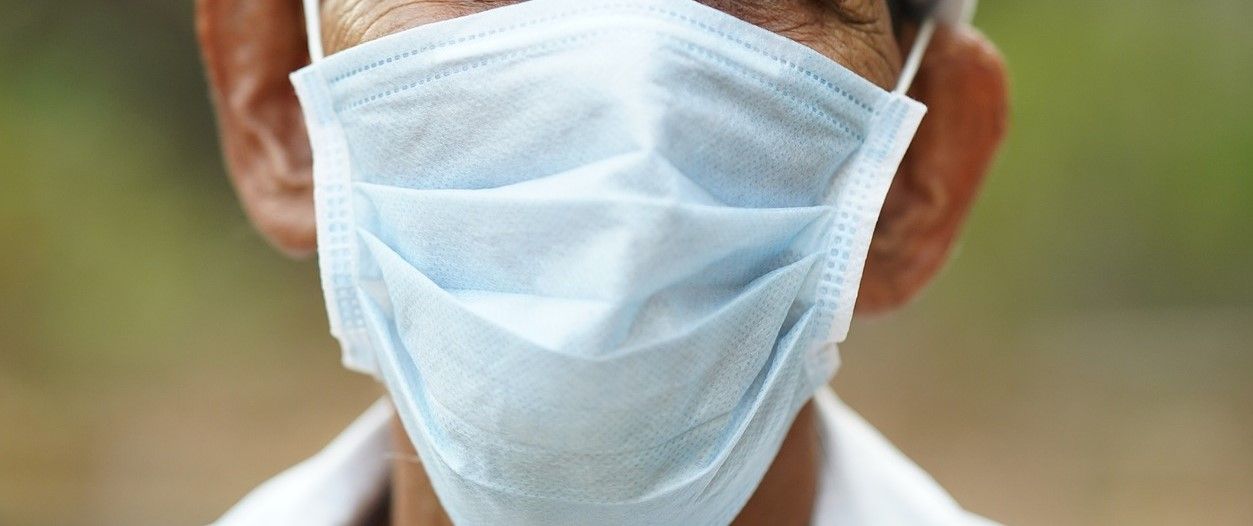One of the fundamentals for keeping essential workers safe during the pandemic was the production and distribution of masks.
Today, as the lockdown is being eased, and following renewed advice from the World Health Organisation, more and more people are wearing nose and mouth coverings. Some of these are medical grade face masks, others plastic screens to cover the face, many are homemade cloth masks that provide little more than a barrier of cotton between the wearer and the airborne virus.
But as the first wave of the pandemic subsides and as governments prepare for the second surge of infections, researchers and manufacturers are looking at ways to improve mask performance while keeping costs low.

One solution to this challenge has come from a very unlikely source: the Jyothy Institute of Technology, in Bangalore, India. Here, researchers led by Dr. Viswanatha R at the Department of Science and Technology’s Nano Mission have developed a functionalized organic-inorganic hybrid nanocoating that can improve a mask’s protective abilities.
The coating’s design is based on sol-gel nanotechnology, employing silica nanoparticles with a polymer matrix to create a hydrophobic surface that also disinfects, killing viruses on contact.
As researchers, the team is well aware of how the increase in demand for masks has driven prices sky high in recent weeks. Making it a key of the team’s plan to keep costs low, while at the same time increasing protection. Especially as standard N95 masks are already priced out of reach for so many of the world’s poorest.

Simpler, disposable masks, while very cheap and affordable for almost everybody, have several limitations:
Firstly, masks are frequently handled as the wearer adjusts, readjusts, and scratches his or her face creating another route to contamination.
Secondly, basic masks are disposable, and so add landfill waste disposal or need to be incinerated, adding to climate change.
Finally, their basic design means that they often trap heat and moisture around the nose and mouth, attracting microorganisms and forming a sweet spot for viruses to multiply.
By using a holistic approach, the team believe they have solved these problems. Namely:
· By designing a nanocoating that can kill viruses, the team have found a way to keep the mask sterile, despite human nature, even when touched.
· The nanocoating makes the mask more effective for longer, so reducing waste.
· The nanocoating is water-repellent, limiting the number of virus-containing water droplets both exhaled and inhaled by the wearer.
As the health care journal Medicircle, explains, “Functionalization of nanoparticles using the sol-gel technology by the researchers will make the nanocoating hydrophobic, which effectively repels water/moisture from the surface of the mask.”
“Further, the addition of a suitable polymer will increase the virucidal properties of the hydrophobic nanocoating. Therefore, by using sol-gel technology, a hybrid organic-inorganic silica-based nanocoating coupled with a proprietary polymer will be developed that will make the masks reusable and non-toxic. The nanocoating will be easily scalable, safe, and economical while being highly effective against the COVID-19.”

One such coating is a product called NANO AB PP-25 which has been developed by Czech nanotechnology specialists. It works by embedding nanoparticles into fabric, creating an anti-viral and anti-bacterial surface to reduce infection rates.
The newly patented product is now due to be produced in the Czech Republic, following agreements between the product’s nanotechnology specialists and the company AG CHEMI GROUP.
“Today, together with Czech manufacturers, we have developed nano technologies than can produce fabrics with active bactericidal effects, killing 99.99% of all known bacteria and virus,” explains Igor Sevcenko, AG CHEMI GROUP’s CEO.
With the world in the grip of a viral pandemic, the breakthrough could not have come at a better time.
“Anti-microbial and anti-viral water repellent masks have a niche purpose where there is an overload of wet infected fluids or where frequent touching and adjusting of masks may happen,” notes Professor Ashutosh Sharma, the secretary of the Department of Science and Technology and the Chair Professor at the Department of chemical engineering of Indian Institute of Technology Kanpur. “There are now several types of such coatings that are being pursued which may be of value if they are safe, do not compromise the ease of breathing, and do not add substantially to the cost.”
Given the urgent need for low-cost, yet high-quality masks, it is hoped that testing of the anti-viral nanocoating can be completed shortly.
With this in mind, the team has now secured financial support to start large scale production of the organic-inorganic hybrid nanocoating, and plans are underway to begin coating masks before the second wave hits.
Photo credit: leo2014 from Pixabay, Shameer Pk from Pixabay, Ashok Adepal from Pexels, & Anna Shvets from Pexels